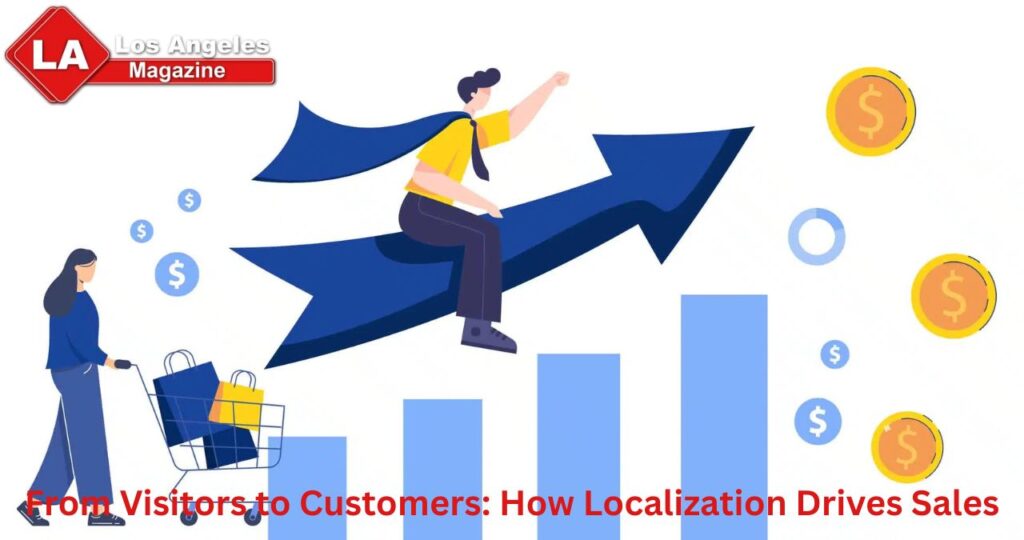You’ve built a great product. Your marketing campaigns are getting clicks. International users are visiting your site, downloading your app, and signing up for a free trial. But then… they drop off.
Why?
The answer often lies in something simple but critical: the experience doesn’t feel local.
If your product or website doesn’t resonate with users in their native language and cultural context, you’re not just losing a few signups—you’re leaving serious revenue on the table. That’s where localization comes in—not just as a support task but as a strategic growth lever.
What Is Localization, Really?
Before we discuss sales impact, let’s clarify the definitions. Localization isn’t just about translating your product or website into other languages. That’s part of it, but not the full story.
Localization means adapting your content, product interface, messaging, and even visuals so they make sense to a specific audience in a particular market. That includes:
- Translating text with the right tone and cultural nuances.
- Adapting layouts, date formats, currency, and legal disclaimers.
- Ensure your product appears and feels native to the market you’re targeting.
Done right, localization builds trust, reduces friction, and helps turn casual visitors into paying customers.
Why Product Managers Should Prioritize Localization
If you’re a PM at a medium-sized company, you’re probably dealing with competing priorities—roadmaps, user feedback, and delivery timelines. But here’s why localization deserves a spot near the top:
- Better Conversion Rates
Your landing page might be brilliant in English. However, if your potential customer in Brazil encounters untranslated UI elements or awkward Portuguese copy, trust drops quickly.
According to CSA Research, 76% of users prefer to shop on websites in their native language, and 40% will never purchase from a site that’s not in their language. These aren’t small numbers—they’re conversion killers.
- Improved Onboarding and Activation
Think about your onboarding flow. It’s designed to ease users into your product, reduce drop-off, and get them to the “aha moment” as quickly as possible.
Localization ensures that new users from different regions understand and connect with each step of the process. A localization agency that’s experienced in UX writing can help adapt onboarding copy so it lands just right in each market.
- Increased Retention and Lifetime Value
Retention doesn’t just depend on features. It depends on emotional connection—on users feeling like your product is “for them.” Localization helps maintain that feeling across languages and cultures.
A user who feels seen and understood is more likely to stick around, renew, and refer others.
How Localization Services Drive Sales Across the Funnel
Let’s break it down by funnel stage and see where localization services really move the needle:
| Funnel Stage | Impact of Localization |
| Awareness | Localized blog posts, ads, and SEO help your brand show up in regional search results. |
| Consideration | Local landing pages, case studies, and translated demos build credibility and trust. |
| Conversion | Checkout pages, pricing in local currencies, and tailored CTAs reduce friction. |
| Retention | Support articles, in-app messages, and release notes in native languages help users stay engaged and informed. |
Working with a localization company ensures consistency across all these touchpoints. They bring expertise, translation memory, automation tools, and often domain-specific translators who have in-depth knowledge of your product space.
What to Look for in a Localization Company
Not all vendors are created equal. If you want localization to support your sales goals truly, look for a localization company that:
- Supports continuous localization: Agile updates, not one-time batches.
- Integrates with your toolset: Think GitHub, Figma, Contentful, or whatever stack you use.
- Offers native translators with product experience: SaaS, mobile, B2B—you want people who speak the language and the product.
- Provides localized QA and testing: Screenshots and in-context reviews are gold.
- Understands your business: Great agencies ask thoughtful questions and challenge assumptions.
Your localization partner should act like a member of your product team, not just a service provider.
Pro Tips for Product Managers Driving Localization
- Start early: Don’t wait until the day before launch. Build localization into your product lifecycle.
- Make it part of your design process: Add space for text expansion, support right-to-left languages, and use language-neutral icons where possible.
- Centralize content: Utilize a translation management system to consolidate all strings in a single location across teams.
- Automate: Manual handoffs and spreadsheets slow you down. Automate what you can—especially syncing strings and updating translations.
- Utilize feedback loops: Allow local teams or users to flag awkward translations and suggest improvements.
Real-World Impact: A Quick Example
Let’s say you launch a SaaS product in English and start getting traffic from France. At first, you think, “Let’s just run the UI through Google Translate.” It’s fast and inexpensive, but the user interface becomes awkward, the onboarding flow confuses users, and sign-ups remain stagnant.
Now imagine working with a localization agency that understands SaaS, has native French translators, integrates directly into your GitHub repo, and delivers context-aware translations.
Suddenly, your product feels French. Your onboarding makes sense. Support articles help, not confuse. And your conversion rate jumps. That’s the power of quality localization.
Final Thoughts: Localization Is a Revenue Driver, Not a Cost Center
For product managers in medium-sized companies with mature processes, the path to global growth isn’t just about adding more features or bigger ads. It’s about making your product feel local, everywhere.
Localization isn’t a checkbox at the end of your roadmap. It’s a strategy that can multiply your existing efforts, unlock new revenue streams, and turn international users into long-term customers.
If you’re ready to turn global visitors into loyal customers, it’s time to invest in localization.



